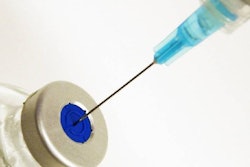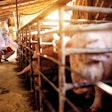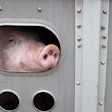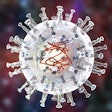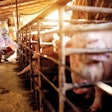
African swine fever will drive the industry, but environment and M&A will also play big roles
As 2020 approaches, what trends should the animal feed industry expect in the next year?
Not surprisingly, African swine fever (ASF) will be the strongest driving force in the industry, with many repercussions. But other trends, including social responsibility and climate change, and merger and acquisition activity also will affect animal feed production in 2020.
Feed Strategy asked industry experts Mark Lyons, president and CEO of Alltech, and Nan-Dirk Mulder, senior global specialist animal protein at Rabobank, what they thought would be the biggest trends in animal feed next year.
Find out more about animal feed trends to watch in 2020 in the January issue of Feed Strategy.
-
African swine fever: changing protein and feed production
Since summer 2018, ASF has been detected in many countries across Asia, Europe and Africa, and has depleted the world’s hog herd. Lyons and Mulder agree the disease is the most disruptive event the animal feed industry has seen in years.
ASF “will have the greatest impact the animal feed industry we have seen from any disease in a generation or more. This is an unprecedented challenge that reverberates across the global food supply chain,” Lyons said.
Mulder said this challenge will create volatility in the market.
“Dealing with the ongoing threat of ASF and the risk of further spread to other regions is probably the biggest challenge the industry will face in 2020. The drops in production of pork in China and Southeast Asia will mean the need of a refocus of industry,” Mulder said. “I believe this will create big volatility in the next years due to combinations of new investments in the Asian markets in new modern integrated pork capacity, ongoing ASF pressure and concerns in local industries, big investments in the poultry industry as well as refocus of global trade on Asian markets with many new market openings.”
As the pork industry, particularly in China, rebuilds, pig and feed production will take on a new face.
“There are some who believe pig production will never again reach levels of the past, or at the least that the industry will look significantly different to what it did before,” Lyons said. “The re-established pork industry will be larger in scale, more biosecure, and controlled by far fewer organizations and individuals.”
Mulder agrees that the pork production system of the future in China will look different.
“We will see a gradual rebuilding of pork production in China and other countries from backyard to modern production with integrated, closed production systems,” he said.
In addition to pork, other proteins, such as poultry and aqua species, will see changes resulting from the demand ASF has created.
“The increase in pork prices demonstrate the impact that the reduction in available pork is having on the market, and this is likely to rise in 2020,” Lyons said. “As we look to fill the gap, there are very few countries able to make a meaningful contribution, not just due to scale but also trade barriers. Equally, other protein sources can only make a small impact. Longer-term consumer consumption patterns are likely to change and other sectors will grow. Specifically, we believe that poultry and aquaculture will become even more essential as protein sources.”
Mulder said the modernization of pork production in China, coupled with demand for other proteins, will increase demand for compound feed.
“Next year, we will see capacity entering the market but, in the case of China, it will take up to five years before the industry can find a new balance back,” he said. “In the meantime, we will see a big shift to other proteins like chicken and ducks, but also seafood. The shift to modern pork production and more chicken and ducks will mean a shift towards more compound feed demand in the region. This is also why we believe drop in compound feed demand will be significantly less than in pork demand.”
Lyons said the effects on feed production and pork prices will continue in 2020.
“We know that feed tonnage has been impacted significantly in China as well as other markets, as pigs were shipped to market earlier than anticipated,” he said. “This has not yet been reflected fully in pork prices or pork volumes due to large frozen inventories, but we have seen those metrics impacted recently. We anticipate that the data will continue to reflect the impact of ASF across most sectors.”
The protein shortage caused by ASF in China will also create more trade opportunities, Mulder said, with the beneficiaries expected to be exporters such as the EU or Brazil.
“We’ve seen China opening (to) meat from many markets with the re-opening of U.S. chicken as the big one, but also the opening of Russia as exporter to China and the pending openings of Ukraine and some European countries like Germany and Hungary are important here. Any opening of trade will create a bullish market. Countries who will open to export to China but also to other countries like Vietnam and Philippines will benefit from good demand and positive prices,” he said.
-
Social responsibility and climate change
Trends related to social responsibility and climate change are also expected in the animal feed industry in 2020. This includes animal welfare, human health, environmentally friendly production and local sourcing.
“It is our belief that agriculture has the greatest potential to shape the future of our planet. It’s critical that we as a society recognize agriculture’s ability to address several of the most significant issues our planet faces: nutrition, human and animal well-being and the preservation of natural resources,” Lyons said. “All stakeholders in the agrifood industry need to engage in communication efforts in order to have the facts at the forefront of this important discussion.”
Mulder said social pressure to reduce antibiotics usage in animal protein production will continue.
“This will come partly from governments who will set more strict standards, partly from customers who will implement higher standards to supply … and partly form companies who use this as part of marketing story,” he said. “This movement will move further and will also increasingly affect industries in emerging markets. From a feed perspective, it means further shifts towards novel additives like probiotic and prebiotic use as alternatives for antibiotics in feed.”
The carbon footprint of agricultural production will also be in the spotlight next year.
“From a protein perspective, there is some concern especially for beef and, to lesser extent, the pig sector because of their relative high carbon footprint,” Mulder said. “Chicken and eggs are better positioned here with a lower footprint.
“From a feed perspective, solutions are needed to reduce environmental/carbon footprint. This can be via further optimizing efficiency, but also by special additives to reduce the environmental footprint of the proteins.”
Mulder also said there is a focus in Europe on the circular economy, meaning sourcing feed ingredients locally, which can be a challenge for protein crops, or using alternative sources that are not widely used.
“In several markets, soybean-free concepts have been introduced with replacing soybean meal by other protein crops like sunflower meal or rapeseed meal,” he said. “Insect-based proteins have been used in feed. The highest potential is likely as an alternative for fishmeal in aquaculture but also in poultry feed.”
-
Mergers and acquisitions
Mulder predicted that merger and acquisition activity in the animal feed industry will be significant in 2020 as smaller producers will be consolidated and internationalization continues.
“Increasingly, more compound feed companies invest in greenfield projects in emerging markets like Southeast Asia, Latin America and also Africa where feed supply is usually the base for a development of a more modern animal protein industry,” he said.
Larger companies will continue to enter smaller industries to create higher margins, he added.
“Grain traders are increasingly entering the animal nutrition industry … to add value to their products and to capture higher margins. Compound feed companies are moving more into premixes to get better value. Feed additive companies have been investing significantly in novel additives like probiotics and prebiotics to benefit from the fast growth in this market. This consolidation process will continue, but identifying the right targets is not easy taking into account the large number of small startups in this business segment,” he said.



